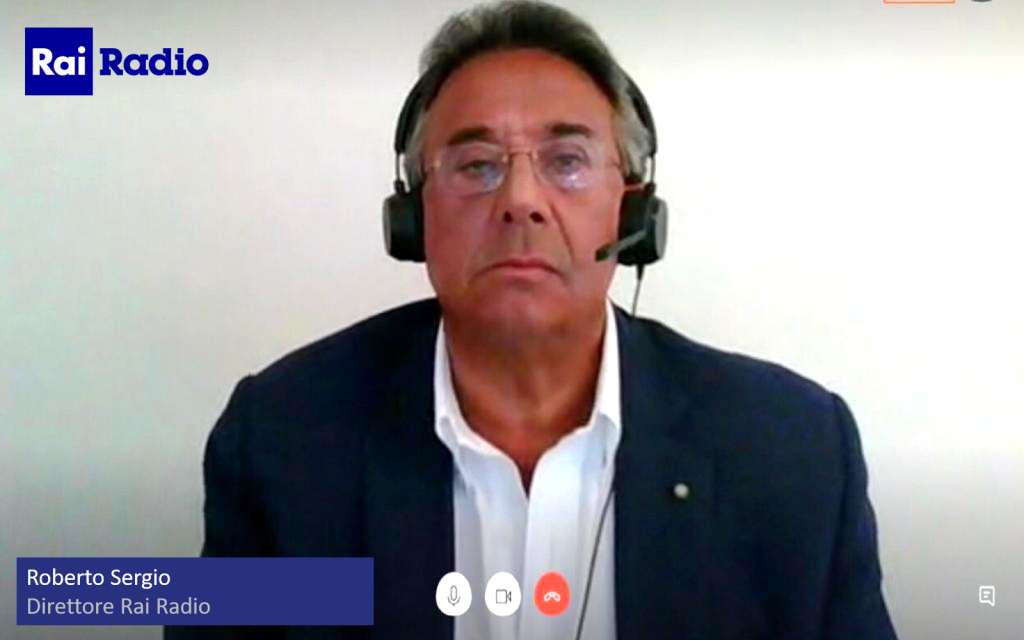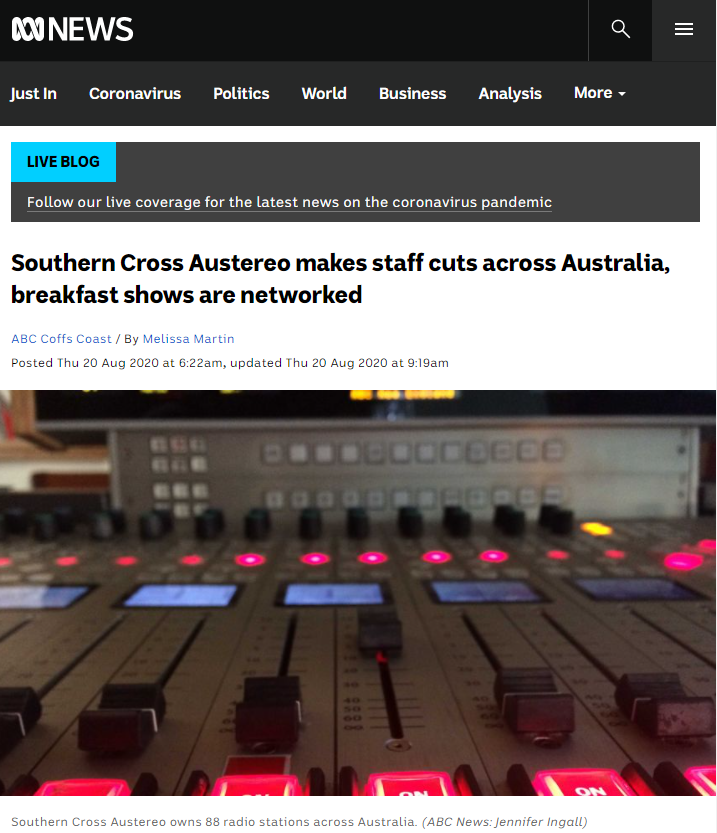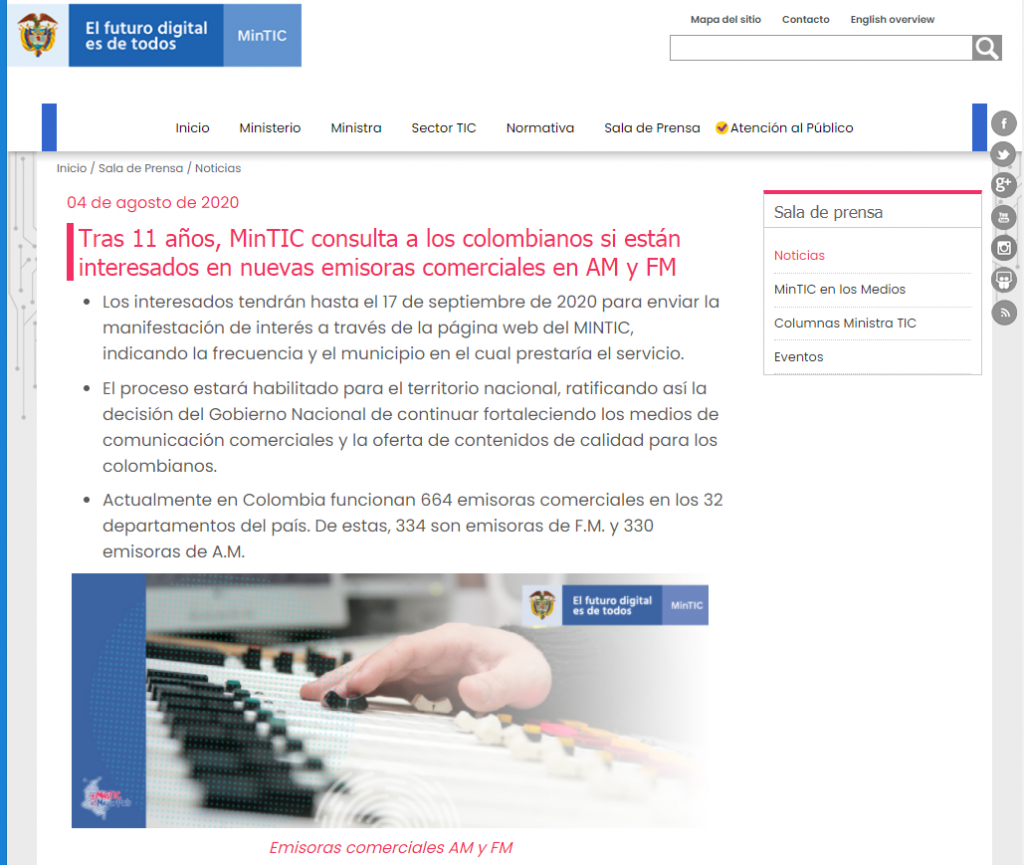Abstract (English)
Radiovision is a typical Italian phenomenon, ridden mainly by RTL 102.5 – from the small screen they receive a dowry of 1.1 million listeners (1.8 million during lockdown). Since 2000 the broadcaster from Cologno has developed a successful format, patenting and exporting it, and many Italian radio stations have imitated it. And to underline the importance of a video presence for the traditional radio stations, now come the ones of Rai. On 14th September, 2020 Radio2 started, with Radio1 to follow in 2021, while Radio3 and the other thematic channels will progressively increase their video spaces. But unlike the other radio stations, the public ones will not be visible on digital terrestrial television (DVB-T) but on RaiPlay, a portal that also hosts all the Rai television channels and an archive of programs. We interviewed Roberto Sergio (RS), director of Radio Rai, the structure that groups all the radio and thematic channels broadcast on DAB.
Article (In Italiano)

Fonte
La radiovisione è un fenomeno tipicamente italiano, cavalcato soprattutto da RTL 102.5 che dal piccolo schermo riceve in dote 1,1 milioni di ascoltatori (1,8 durante il lockdown). L’emittente di Cologno ha messo a punto (dal 2000) un format di successo, brevettandolo ed esportandolo, e tante radio italiane l’hanno imitata. E a sancire l’importanza di una presenza in video della radio tradizionale oggi arrivano le radio della Rai. Il 14 settembre ha iniziato Radio2, seguita l’anno prossimo da Radio1, mentre Radio3 e gli altri canali tematici incrementeranno progressivamente i loro spazi video. Ma a differenza delle altre emittenti, quelle pubbliche non saranno visibili sul digitale terrestre ma su RaiPlay, la piattaforma che ospita anche tutte le tv e un archivio dei programmi. Per far luce su alcuni dettagli, abbiamo posto alcune domande a Roberto Sergio (RS), direttore di Radio Rai, la struttura che raggruppa tutti i canali radiofonici e quelli tematici trasmessi sul DAB.

Fonte: Ufficio Stampa Rai
RR: Puntare sul format, la professionalità e la simpatia dei conduttori viene fatto da molte emittenti. A settembre svelerete delle innovazioni nel vostro modo di fare radiovisione?

Fonte: Ufficio Stampa Rai
RS: La nostra visual radio avrà tutti i contenuti di Radio 2: i programmi con i nostri oltre 60 conduttori, la musica con i video, l’informazione, il meteo e così via. Sicuramente non siamo i soli a farlo, ma credo di poter dire che solo noi possiamo mettere in campo tutta questa ricchezza di contenuti e una qualità delle conduzioni che non teme confronti con voci, che adesso diventano volti, di altissimo profilo. E con una cura estrema per il confezionamento di un prodotto che ha come faro guida l’intrattenimento leggero ma intelligente. C’è poi da dire che la nostra scelta di posizionamento è molto diversa da quella di alcuni nostri competitor della radiovisione. Noi non vogliamo fare una tv. Non a caso non andiamo a occupare un canale televisivo. Faremo una radio che, potendosi vedere, potrà andare sui media digitali nativi video.
Radio 2 in visual radio andrà su Rai Play e da lì, magari con contenuti brevi, con pillole di video, contiamo di andare “in giro” sulle varie piattaforme video. Per portare la nostra radio anche a chi non la conosce. E comunque, Rai Play è oggi visibile sui televisori connessi con estrema facilità. Quindi non andiamo a competere con i canali tv classici, ma ne condividiamo il mezzo, che diventa uno dei modi per arrivare alle persone. Tutto un altro approccio rispetto alla radio tale e quale riproposta in tv, accesa magari per incrementare la notorietà del brand e far salire i dati delle rilevazioni Ter.
RR: Si è parlato di una progressiva migrazione in video di tutte le radio Rai: che tempi vi siete dati per mettere a punto Radio2 e in che tempi la trasformazione toccherà gli altri canali?

Fonte: Ufficio Stampa Rai
RS: Radio 2 è pronta. Dal prossimo settembre sarà tutta in visual radio tranne la notte. Alcuni contenuti si affineranno strada facendo, ma la partenza è garantita. Per gli altri, l’orizzonte è il 2021, anche se c’è da fare un distinguo. Radio 2 è un canale di intrattenimento di flusso, quindi ha motivo di essere sempre in modalità visual. Gli altri canali accenderanno alcune finestre in momenti specifici. Quei momenti che riterremo di appeal per il pubblico delle piattaforme video. Per capirci, Radio 3 non sarà sempre in video, ma potrà accendere le telecamere in occasione di concerti o piece teatrali che si svolgeranno nelle nostre sale, oppure se in un determinato programma avremo ospiti di eccellenza. Il tutto soprattutto per la distribuzione sui social, con l’obiettivo di far girare i contenuti al di là del nostro target primario, come detto precedentemente.
RR: La versione video di un canale informativo come Radio1 potrebbe togliere ascolti a RaiNews24?

Fonte: Ufficio Stampa Rai
RS: Anche Radio 1 seguirà la stessa strategia, non sarà sempre in onda (non avrebbe senso). Ma potrà passare in modalità visual per brevi pillole. Quindi nessuna competizione con RaiNews24, che ha ovviamente altri mezzi e un’altra piattaforma di elezione. La visual radio è un modo per uscire dal mezzo “audio only” e andare a intercettare pubblico nei mezzi visuali. Ma non è un competitor della tv. Del resto, se così non fosse, non avremmo scartato l’idea di avere dei canali video su Dtt.
Fabrizio Carnevalini






